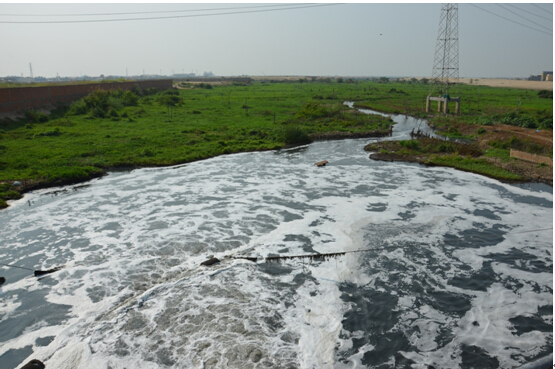Phnom Penh lacks centralized municipal sewage treatment plants
chinagate.cn, March 23, 2015 Adjust font size:
Tongji University recently issued a survey report on Cambodian wastewater treatment technology demands, listed the needs for sewage treatment technology in Cambodia and discussed possible cooperation on wastewater treatment technology between Cambodia and China.
Phnom Penh, located on the banks of the Tonlé Sap and Mekong River, is the capital and largest city of Cambodia. It is the nation's center of economic and industrial activities, as well as the center of security, politics, cultural heritage, and diplomacy. Cambodia has a stable domestic politics and social economy, with an annual GDP growth rate of above 7%. However, as the economic activity and annual GDP of Phnom Penh continue to grow, so too has its sewage problem. The municipal infrastructure in Cambodia, even in its capital, has lagged behind its social development.
Lack of centralized municipal sewage treatment plants
Phnom Penh does not have a centralized urban sewage treatment plant. The municipal wastewater is mainly discharged into natural wetlands through the existing drainage network and other natural water courses. Ultimately the waste is naturally degraded and eventually discharged into the Bassac River and Mekong River. The wetlands of Boeng Cheung Ek, Boeng Trabek, Boeng Salang and Boeng Tumpun, located in the southern and southeastern part of Phnom Penh, function as natural sewage treatment plants. These wetlands play an important role in degrading the organic waste and easing the load of downstream water bodies. It has been estimated that, more than one million tons of wastewater and storm water per day is discharged into these natural water bodies, causing nearly 100 tons of the BOD load.

Municipal sewage being discharged into the Boeng Tampoun wetland
For a long time, Phnom Penh has depended on surrounding wetlands to purify the wastewater instead of centralized urban sewage treatment plants. But as its economy and population expands, using natural water bodies as sewage treatment plants is not sustainable. Inevitably, the quality of the river water will deteriorate and pose a risk to life in the Mekong River region, especially where the river water is used for drinking.
In addition, the urban sewage and industrial wastewater also contain a large number of heavy metals, non-biodegradable organic pollutants and bacteria, leading to excessive levels of Escherichia coli and some heavy metals in water spinach, one of the major local aquatic plants.
The Phnom Penh Strategic Orientation Plan states that by 2020, natural wetlands should be halved so that more land can be used for urban development. If so, the natural environmental capacity would be further reduced, exacerbating the situation of inadequate sewage treatment capacity.

